The Samsung Galaxy S6 and S6 edge Review
by Joshua Ho on April 17, 2015 9:00 AM EST- Posted in
- Smartphones
- Samsung
- Mobile
- Galaxy S6
- Galaxy S6 Edge
NAND Performance: The First UFS Phone
Storage performance is often a critical area for user performance, as applications cannot be cached in RAM at every possible moment. Camera performance is also often limited by storage performance as RAM buffers can only do so much to maintain performance before it’s necessary to commit photos to non-volatile storage.
However due to the memory hierarchy to some extent, storage performance is often hard to notice once it’s at a point where things are “good enough”. Unfortunately, in some cases we can see OEMs failing to include sufficiently performant solid-state storage, which can be a major pain point in the user experience when random read/write performance is low enough that there are noticeable IO pauses as the system has to wait for data to be loaded from storage.
The Samsung Galaxy S6 family is the first shipping implementation of UFS (Universal Flash Storage) 2.0 standard, which makes the internal storage model less like an SD card in nature. When comparing the eMMC 5.1 standard to the UFS 2.0 standard, we see a move from a the 400 MB/s maximum of the eMMC 5.1 standard with HS400 physical link interface to MIPI M-PHY, which allows for a theoretical maximum of around 720 MB/s and should be more efficient in transmitting data than the current eMMC standard. In addition, UFS makes it possible to do full duplex communication, which means that reads and writes can happen simultaneously. There's also a command queue, which helps to avoid inefficiencies that could arise from waiting for commands once a command has been processed by the storage controller, and utilizes the SCSI protocol to facilitate these new features at the interface level.
As for the Galaxy S6 itself, the UFS implementation Samsung is using is Samsung developed. Samsung's current implementation only supports up to 300 MB/s (or 2.4 Gbps) transfer rates as a theoretical maximum, so from an interface perspective it's still not reaching the full capabilities of the standard. Though even at a cap of 300MB/sec, it still stands to be a significant improvement over typical eMMC solutions.
Finally, on a technical note, the 32GB models are of the model KLUBG4G1BD-E0B1 with a maximum queue depth of 16.
In order to test storage performance, we use Androbench with some custom settings to get a reasonable idea of performance in this area, although this test isn’t an exhaustive examination of storage performance by any means.
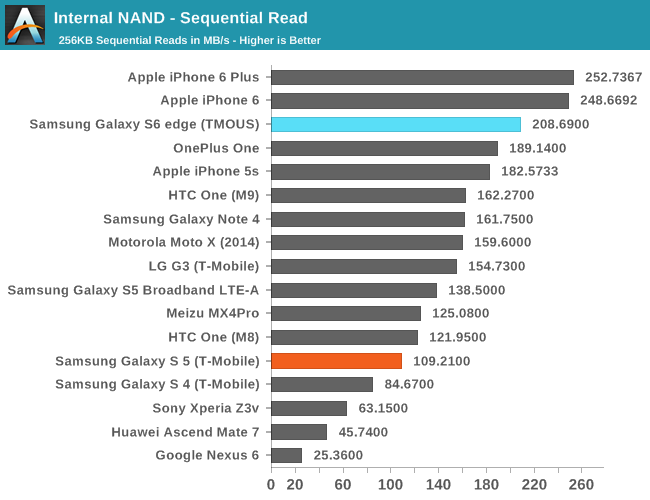
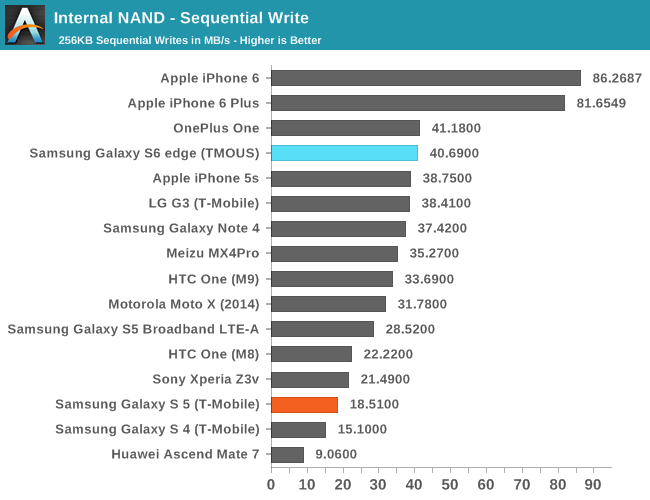
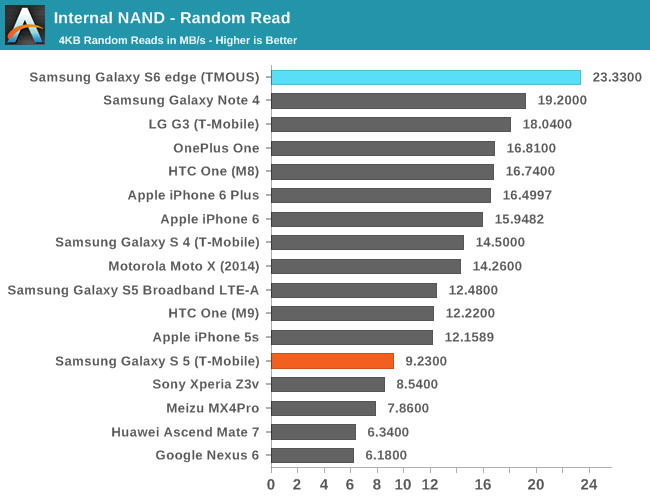
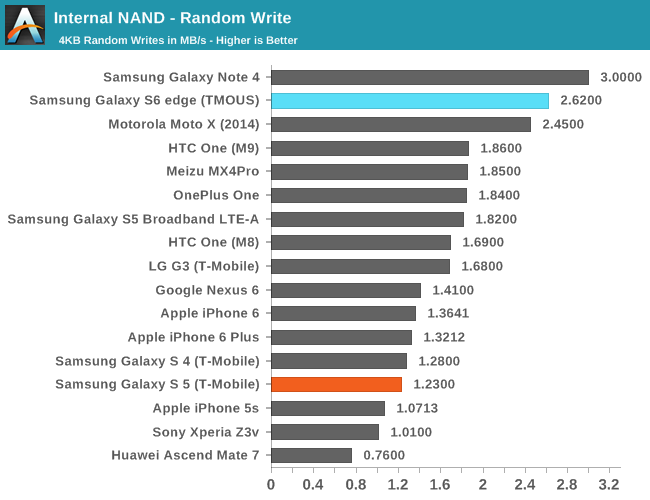
The Galaxy S6 performs rather impressively in our standard storage test, but not as fast as one might have hoped. This is due to the nature of the Androbench 3.6 test, which only tests a single IO thread, which won’t use the UFS storage of the Galaxy S6 to its full extent. In order to see the kind of difference that UFS really makes, I ran the same test again on Androbench 4.x, which does support multiple IO threads. However, as our iOS storage test and Androbench 3.6 don’t support more than a single IO thread we will continue to present both results for now.
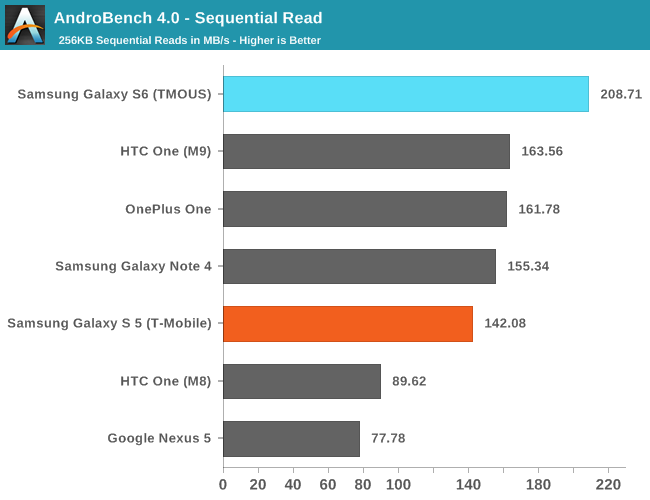
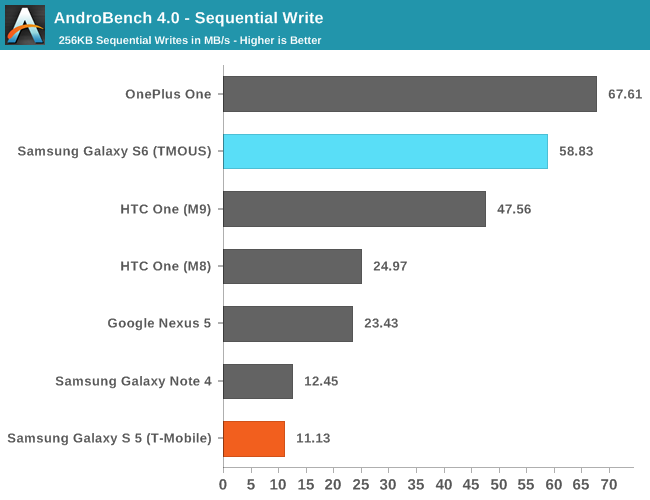
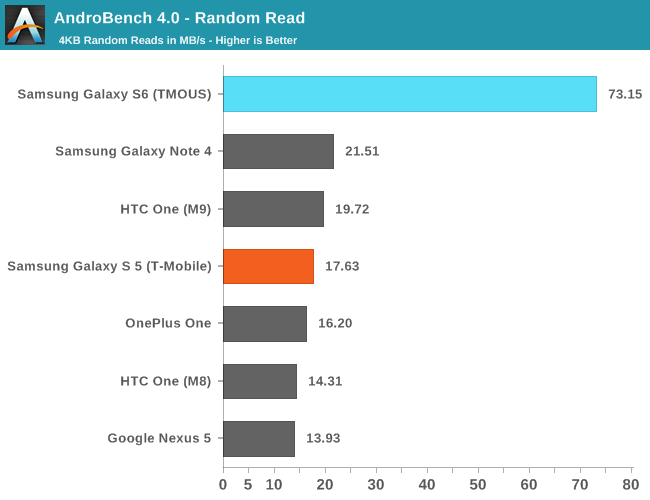
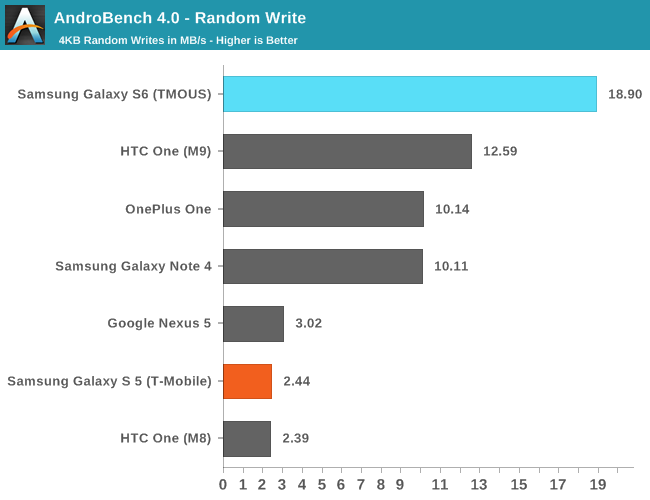
Overall, there are some immense benefits in storage performance here, especially in random IO performance. The Galaxy S6 has some of the fastest storage available in a phone today as far as I can tell given that this is basically a pure MLC solution, and shouldn’t have any real issue with storage performance holding back the rest of the phone over the course of 1-3 years as long as a reasonable amount of free space is kept to allow efficient storage management.


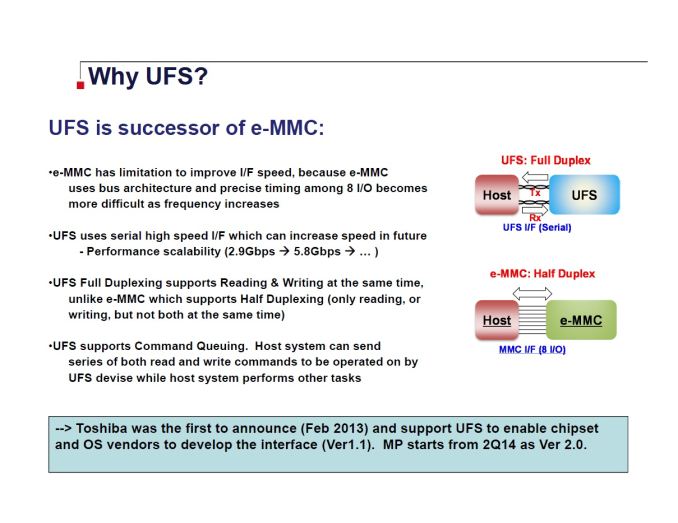








306 Comments
View All Comments
FlushedBubblyJock - Friday, April 24, 2015 - link
so the pictures go by default to internal memory - that's one red herring out with the bathwater ...lag and power drain - I guess android is so stupid the 1st thing it does when you touch your metal feel, is scan the sd card for desperately needed data, right ?
yes, twin babies out with the bathwater fella - right out the window an onto the sidewalk below
h3ck - Friday, May 8, 2015 - link
How is removing the sdcard more "iPhone-like" when Google Android Standard is no sdcard? The flagship Vanilla Android Nexus line is all sans sdcard. I think we often forget that and quickly point to Apple. Also, with increasing harddisk sizes and the ease of using a microsd to microusb adapter (see Dash Micro device), I think the sdcard argument is weak.Daniel S. Buus - Friday, July 17, 2015 - link
Those were my gripes as well. However, as I've learned that the battery is still replaceable, and the charge is $45 for such a replacement done by Samsung, the battery issue doesn't bother me anymore. Then the storage thing — I've previously bought my share of SD cards to augment my phones. The largest card I've bought was a 64GB one, though, which was sufficient in my Note 3 to satisfy my hunger for filming 1080p60 when travelling. I just ordered the S6 128GB version on sale for the same price as the 32GB version, and it's plenty plenty plenty for my needs. I may have to unload some stuff in the evening to an external storage device if I go crazy with my filming, but that's it. Reading this review and seeing the impressive speed of the storage just makes me even happier that I finally chose this phone :)beehofer - Friday, April 17, 2015 - link
Nice Phone. There's nobody who won't take one if it were offered. But since we have to pay, ppl will decide on the things that set it apart from the pack. Samsung had an "edge" with SD cards and removable batteries and for some of us it will be a deciding factor. The battery, OK I'll get an extra charger for the car or office but the SD is inexcusable. This has ALWAYS been a blow against Apple and now it can be said against Samsung. I'll keep my S5 or wait.name99 - Friday, April 17, 2015 - link
Samsung probably ALSO have sw installed on the phone that tells it when an SD card has been installed and the battery replaced, and is well aware that <1% of their phones ever went through either operation.I suspect Samsung's idea of what matters to the market is rather more accurate than your idea...
FlushedBubblyJock - Friday, April 24, 2015 - link
I believe you are referring to the NSA, and thus, with no removable battery, the phone can never really be "turned off" and no removable SD means Homaleand Security and the NSA can access you and everything you've done at any time....So, it's truly and upgrade because you of course have nothing to hide
akeemcharles - Friday, April 17, 2015 - link
Nice photosUxi - Friday, April 17, 2015 - link
I have an S5 with wireless charging using original Samsung covers, so wireless charging is not N/A on the S5, but I admit it was an add-on purchase.DanNeely - Friday, April 17, 2015 - link
What is the "obvious" defect on the S6 screen picture? Is it one of the things that looks like a fingerprint smudge, the horizontal blue bar that looks like a reflection, or something that isn't obvious to me from looking at the picture?nerd1 - Friday, April 17, 2015 - link
I have a phone with exactly the same display (Galaxy S5 cat.6 model) and couldn't see any 'obvious' defects at all.